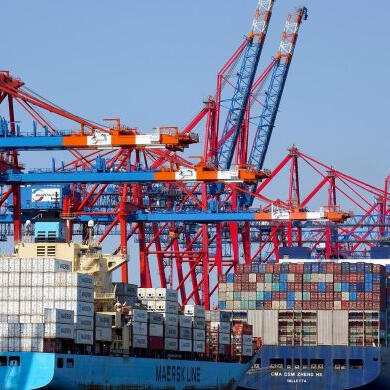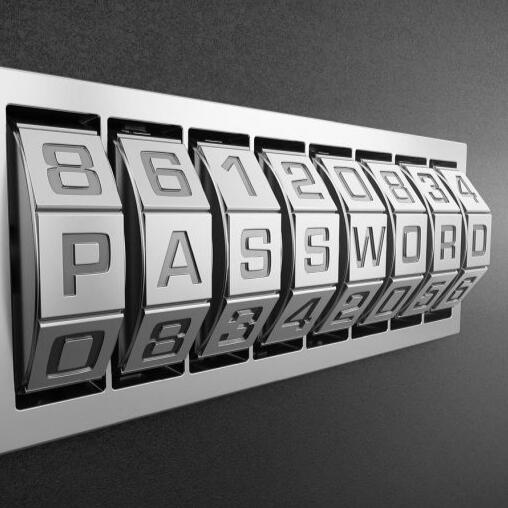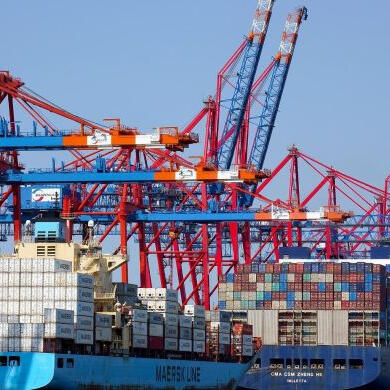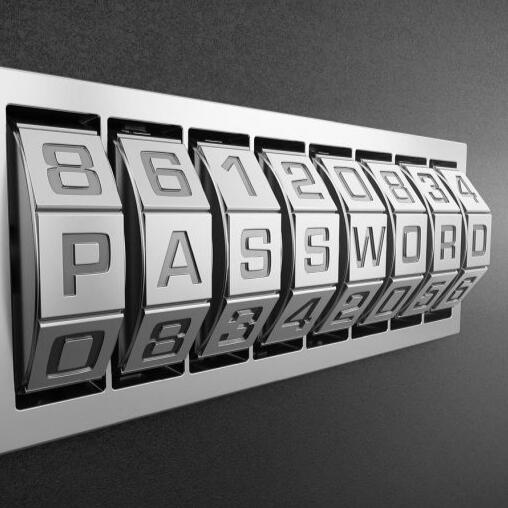
Our Blog
We write regular articles and publish them on LinkedIn and other places.
Here is a list of our latest articles
ISO 27001 Auditors: Ensuring Information Security Compliance
11 March 2025
When it comes to ISO 27001, auditors are the unsung heroes keeping information security on track. They’re the ones who verify that an organisation’s Information Security Management System (ISMS) isn’t just a stack of policies but a living, breathing framework that protects data effectively. With the shift to ISO 27001:2022 and the 2013 version expiring in August 2025, their role is more vital than ever. So, what does auditing involve, and what qualifications make someone fit for the job?
Internal Audits Are Mandatory and Crucial to the ISO 27001 Compliance Process
10 March 2025
If you’re working towards or maintaining ISO 27001 compliance, there’s one step you can’t skip: the internal audit. It’s not just a box to tick, it’s a cornerstone of the process, baked into the standard itself under Clause 9.2. For any business, especially SMEs chasing the 2022 version before the 2013 certification expires in August 2025, understanding why internal audits matter could be the difference between success and a costly stumble.
Guide to Gap Analysis – Understanding It and Executing It Effectively
7 March 2025
Gap analysis might sound like consultant jargon, but it’s a practical tool that can make or break your journey to standards like ISO 27001. It’s all about pinpointing where you stand today versus where you need to be, and crafting a plan to close the distance. Here’s how to get it right.
Crafting a Robust Statement of Applicability for Your ISO 27001:2022 Implementation
6 March 2025
You’ve likely encountered the Statement of Applicability (SoA) – a cornerstone document that can make or break your Information Security Management System (ISMS). As someone navigating this process, I’ve seen how pivotal the SoA is in demonstrating control over your security risks. So, what exactly is it, and how do you ensure it’s fit for purpose?
The Requirement for ISO 27001 Certification in the Tendering Process
5 March 2025
If you’ve been involved in tendering lately, you might’ve noticed a recurring theme: ISO 27001 certification is increasingly a must-have. From government contracts to corporate supply chains, this information security standard is shifting from a nice-to-have to a dealbreaker. So, what’s driving this trend, and how can it impact your business?
ADISA Certified ITAD Services - A Cornerstone of Data Security
4 March 2025
When it’s time to retire old IT equipment, be it laptops, servers, or hard drives, how confident are you that your data stays secure? This is where ADISA-certified IT Asset Disposal (ITAD) services step in, offering a gold standard for organisations serious about protecting sensitive information. But what makes ADISA certification so valuable, and why should it matter to your business?
ISO 27001 Audits – What to Expect and How to Prepare
3 March 2025
The audit process is a pivotal moment for any organisation pursuing or maintaining ISO 27001 certification. It’s the point where your Information Security Management System (ISMS) is put under the microscope, and while it might feel daunting, understanding what lies ahead and preparing effectively can transform it into an opportunity to shine. So, what should you expect, and how can you get ready?
ISO 27001:2022 – Preparing for Effective Incident Response
28 February 2025
The 2022 update to ISO 27001 doubles down on incident response, urging UK businesses to be ready before disaster hits. With breaches costing firms millions, effective preparation isn’t just smart—it’s survival.
ISO 27001:2022 – Preparing for Effective Incident Response
27 February 2025
The 2022 update to ISO 27001 doubles down on incident response, urging UK businesses to be ready before disaster hits. With breaches costing firms millions, effective preparation isn’t just smart—it’s survival.
Managing Insider Threats with ISO 27001:2022
26 February 2025
Insider threats, whether from negligence or malice, can derail even the best security strategies. The 2022 revision of ISO 27001 sharpens its focus on these risks, recognising that people inside your organisation can be as dangerous as external hackers. For UK businesses, this is a chance to rethink how we manage the human element of security.
ISO 27001:2022 and the Rise of Cloud Security Challenges
25 February 2025
Cloud adoption has transformed how UK businesses operate, but it’s also opened the door to new security risks. The 2022 update to ISO 27001 reflects this shift, placing greater emphasis on securing cloud environments. For British organisations, aligning cloud usage with the standard’s controls is no longer optional, it’s essential.
Enhancing Supply Chain Security Under ISO 27001:2022
24 February 2025
Supply chains are the backbone of modern business, but they’re also a prime target for cyber threats. For UK organisations, ensuring robust information security across these networks has never been more critical or complex. The 2022 update to ISO 27001 offers a sharper focus on supply chain security, reflecting the reality of interconnected operations and the risks that come with them.
ISO 27701: Enhancing Privacy Management – A Robust Extension of ISO 27001
21 February 2025
ISO 27701 is a standard that builds upon the well-established ISO 27001 framework to address one of the most critical aspects of modern business: privacy management. Specifically designed to protect Personally Identifiable Information (PII), ISO 27701 offers a comprehensive approach to integrating privacy into information security practices.
What is Digital Transformation?
20 February 2025
Digital transformation refers to the process of integrating digital technologies into all aspects of an organisation, fundamentally changing how it operates and delivers value to its customers. It’s not just about adopting new tools or software—it’s a holistic shift that involves rethinking business processes, culture, and customer experiences to leverage the opportunities presented by technology
The Role of AI in Enhancing Cybersecurity
19 February 2025
Cybersecurity is a relentless battlefield. As organisations digitise their operations and cyber threats grow ever more sophisticated, traditional defences - firewalls, manual monitoring, signature-based detection, are no longer enough.
ISO 27001 and GDPR: Synergies and Differences
18 February 2025
Data protection has become a cornerstone of corporate responsibility and compliance. Two pivotal frameworks that guide organisations in this realm are ISO 27001 and the General Data Protection Regulation (GDPR).
ISO 27001 and GDPR: Synergies and Differences
17 February 2025
Phishing remains one of the most persistent cyber threats. Despite its age, the methods employed by attackers have evolved, becoming more sophisticated and harder to detect. We explore the latest phishing techniques and offer practical advice for training employees to recognise and combat these deceptive practices.
The Impact of ISO 27001 on Customer Trust
16 February 2025
Safeguarding information has become tantamount to preserving customer trust. ISO 27001, an international standard for Information Security Management Systems (ISMS), serves as a beacon for businesses aiming to demonstrate their commitment to securing sensitive data.
Safeguarding Your Remote Workforce
15 February 2025
With the shift towards remote working, cybersecurity has become a paramount concern for businesses everywhere. Ensuring the safety of your remote workforce involves protecting not just company data but also the personal devices and home networks that employees use.
Integrating ISO 27001 with Business Operations
14 February 2025
Protecting information is crucial not only for compliance but as part of a company's strategic approach. Implementing ISO 27001, the international standard for information security management, can be transformative for organisations. However, the real benefit of ISO 27001 comes from integrating it into everyday business activities, ensuring that security aligns with key business aims.
The Importance of Regular Security Audits
13 February 2025
Security Audits are a critical component of a cyber security strategy, preventing data breaches and ensuring regulatory compliance.
How to Implement a Zero Trust Security Model
12 February 2025
Implementing a Zero Trust Security Model involves rethinking traditional security architectures by assuming that no user, system, or service operating within or outside the network perimeter should be inherently trusted. Here's a breakdown of the principles, benefits, and steps for implementation.
Managing assets in compliance with ISO/IEC 27001
6 February 2025
Managing assets in compliance with ISO/IEC 27001 is crucial for enhancing an organization's security posture, effectively managing risks, and ensuring legal and regulatory compliance. It facilitates business continuity, builds customer trust, and provides a competitive edge by demonstrating a commitment to information security.
Navigating Asset Management Through the Lens of ISO 27001
5 February 2025
In today's digital-first environment, managing your organisation's assets is not just about keeping track of physical items; it extends deeply into information assets which are crucial for business operations, client trust, and regulatory compliance. Here’s where ISO 27001 standards come into play, offering a structured approach to information security management.
Internal Audits Are Mandatory and Crucial to the ISO 27001 Compliance Process
11 March 2025
When it comes to ISO 27001, auditors are the unsung heroes keeping information security on track. They’re the ones who verify that an organisation’s Information Security Management System (ISMS) isn’t just a stack of policies but a living, breathing framework that protects data effectively. With the shift to ISO 27001:2022 and the 2013 version expiring in August 2025, their role is more vital than ever. So, what does auditing involve, and what qualifications make someone fit for the job?The Requirements for ISO 27001 AuditingAuditing under ISO 27001 is a structured process, governed by Clause 9.2 for internal audits and stricter rules for certification audits. The goal? To assess whether the ISMS meets the standard’s 93 controls, from risk management to incident response, while aligning with the organisation’s own security objectives. Auditors review documentation, think policies, risk assessments, the Statement of Applicability, then test implementation through interviews, site checks, and evidence sampling. For internal audits, objectivity is key, meaning the auditor can’t audit their own work. Certification audits, conducted by accredited bodies, dig deeper, split into Stage 1 (documentation review) and Stage 2 (implementation check). Both demand a methodical approach, with findings documented clearly, non-conformities flagged, and corrective actions tracked. It’s not about catching people out, it’s about proving the system holds up under scrutiny.Qualifications and Certifications NeededSo, who’s qualified to do this? ISO 27001 auditors need a mix of technical know-how, auditing skills, and recognised credentials. For internal auditors, a solid grasp of the standard is essential, often gained through training like the ISO 27001 Foundation course. Many also hold the ISO 27001 Lead Implementer certification, showing they understand ISMS setup and can spot gaps effectively. For certification auditors, the bar’s higher. They typically need the ISO 27001 Lead Auditor certification, a rigorous qualification offered by bodies like PECB, Exemplar Global, or IRCA. This involves training on audit principles (think ISO 19011), hands-on experience, and passing an exam. They must also work for an accredited certification body, ensuring impartiality and adherence to global standards. Knowledge of the 2022 updates, cloud security, supply chain risks, is a must too, as is staying current through continuous professional development. Experience counts as much as certificates. Seasoned auditors bring insights from diverse industries, helping them tailor audits to specific risks, whether it’s an SME’s lean setup or a larger firm’s complex IT estate. Soft skills, communication, critical thinking, round out the profile, making findings actionable rather than intimidating.Why It MattersA skilled auditor doesn’t just ensure compliance, they strengthen trust. With data breaches costing millions and clients demanding ISO 27001 certification, their work underpins credibility and resilience. As August 2025 nears, when 2013 certifications lapse, their expertise will be in high demand to navigate the transition.
Internal Audits Are Mandatory and Crucial to the ISO 27001 Compliance Process
10 March 2025
If you’re working towards or maintaining ISO 27001 compliance, there’s one step you can’t skip: the internal audit. It’s not just a box to tick, it’s a cornerstone of the process, baked into the standard itself under Clause 9.2. For any business, especially SMEs chasing the 2022 version before the 2013 certification expires in August 2025, understanding why internal audits matter could be the difference between success and a costly stumble.Why They’re MandatoryISO 27001 isn’t about setting up an Information Security Management System (ISMS) and calling it a day. The standard demands you prove it works, consistently. Clause 9.2 requires organisations to conduct internal audits at planned intervals, checking that your ISMS meets the standard’s requirements, aligns with your own policies, and actually delivers on security goals. Skip this, and you’re not compliant, simple as that. External auditors will expect evidence of these checks, so it’s non-negotiable if certification’s your aim.Why They’re CrucialBeyond the mandate, internal audits are your early warning system. They dig into the nuts and bolts of your ISMS, controls, processes, people, spotlighting gaps before they turn into breaches or audit failures. Think of it as a dress rehearsal: you test everything from access management to incident response, ensuring staff know their roles and documentation holds up. For SMEs, where resources are tight, catching issues early saves time, money, and reputational hits.Take the 2022 update, for instance. With new controls around cloud security and supply chain risks, an internal audit helps you confirm you’re not just compliant on paper but in practice too. With August 2025 looming, when 2013 certifications lapse, getting this right now keeps you ahead of the curve.Making It WorkSo, how do you pull off a solid internal audit? Start by planning, set a scope and schedule that covers all ISMS elements. Use a checklist tied to ISO 27001:2022, there are plenty online, or tailor one to your setup. Involve impartial staff or an external partner to keep it objective, bias can blur the picture. Then, document everything, findings, fixes, follow-ups, auditors love a clear trail.It’s not about perfection straight away, it’s about improvement. Each audit builds resilience, making your ISMS stronger and your business more credible. For SMEs, that’s a win, whether you’re chasing contracts or just protecting what matters.
Guide to Gap Analysis – Understanding It and Executing It Effectively
7 March 2025
Gap analysis might sound like consultant jargon, but it’s a practical tool that can make or break your journey to standards like ISO 27001. It’s all about pinpointing where you stand today versus where you need to be, and crafting a plan to close the distance. Here’s how to get it right.What It InvolvesAt its heart, gap analysis compares your current state, processes, controls, resources, to a target framework. For ISO 27001, that’s the 114 controls across 14 domains, covering everything from access management to incident response. The goal? Identify deficiencies, whether it’s missing policies, weak training, or unaddressed risks. It’s a diagnostic step that sets the stage for compliance or improvement.How to Execute ItStart with scope, define which parts of your organisation are in play. Assemble a cross-functional team to capture diverse perspectives, then gather evidence: policies, logs, risk registers. Use a detailed checklist aligned with your target standard, and systematically score your compliance. Don’t rush, thoroughness here saves headaches later.Next, analyse findings. Categorise gaps by severity, major risks versus minor tweaks, and prioritise based on business impact. Develop an action plan with clear owners, deadlines, and resources. Software can help track progress, but a simple spreadsheet works too. Review regularly to stay on course.The PayoffDone well, gap analysis isn’t just a pre-certification chore, it’s a roadmap for resilience. It highlights vulnerabilities before auditors do and aligns your efforts with strategic goals. Whether you’re chasing ISO 27001 or another standard, it’s a disciplined way to turn intent into action.
Crafting a Robust Statement of Applicability for Your ISO 27001:2022 Implementation
6 March 2025
If you’re working towards ISO 27001:2022 certification, you’ve likely encountered the Statement of Applicability (SoA) – a cornerstone document that can make or break your Information Security Management System (ISMS). As someone navigating this process, I’ve seen how pivotal the SoA is in demonstrating control over your security risks. So, what exactly is it, and how do you ensure it’s fit for purpose? Let’s break it down.What is the SoA?The SoA is your organisation’s blueprint for the 93 controls listed in Annex A of ISO 27001:2022. Updated from the 2013 version, these controls are now neatly categorised into four domains: Organisational, People, Physical, and Technological. The SoA doesn’t just list them – it’s a declaration of which controls you’re applying, why, and how they’re being implemented (or why they’re not). Think of it as the bridge between your risk assessment and your security strategy.Here’s what a solid SoA should include:- All 93 Controls: Every control from Annex A, numbered and named (e.g., A.5.1.1 – Policies for Information Security).
- Applicability: A clear “yes” or “no” for each – is it relevant to your organisation?
- Justification: Why you’re including or excluding it, rooted in your risk assessment or operational context.
- Implementation Status: Is it fully in place, partially done, or still on the to-do list?
- Risk Links: Traceability to the risks you’ve identified and prioritised.Building an SoA That Stands Up to ScrutinyCreating an SoA isn’t just a box-ticking exercise – it’s about proving your ISMS is tailored and effective. Here’s how to get it right for ISO 27001:2022:Start with Your Risk Assessment
Your SoA must flow from a thorough risk assessment (Clause 6.1.2). Identify your assets, threats, and vulnerabilities first. For instance, if phishing poses a high risk, controls like A.7.2.2 (Information Security Awareness, Education, and Training) should feature prominently.Address Every Control
Auditors won’t accept gaps. Even if a control feels irrelevant – say, A.11.1.5 (Securing Offices, Rooms, and Facilities) for a fully remote team – justify its exclusion. “We operate cloud-only with no physical premises” is far stronger than a vague “not applicable.”Justify with Precision
For included controls, link them to specific risks or requirements (legal, contractual, or business-driven). For exclusions, tie them to your scope or context. Example: “A.14.2.7 (Outsourced Development) is excluded as all development is handled in-house.”Reflect Your Scope
Defined your ISMS scope under Clause 4.3? Ensure the SoA mirrors it. A cloud-only business might skip physical controls, but the reasoning must be explicit.Embrace the 2022 Updates
The standard’s 2022 revision introduced 11 new controls (e.g., A.5.7 – Threat Intelligence) and streamlined Annex A to 93 controls. Double-check your SoA reflects this structure – no lingering 2013 references!Show Evidence
For every “yes,” back it up. Reference policies, tools, or records. “A.12.4.1 (Event Logging) is implemented via our SIEM system, with logs retained for 12 months” tells auditors you mean business.Keep it Cohesive
Your SoA should align seamlessly with your risk treatment plan and policies. Inconsistencies – like a control marked “implemented” but lacking a procedure – are red flags.Secure Buy-In
Get top management (Clause 5.1) to review and sign off. Their endorsement signals the SoA reflects organisational priorities.Test and Tweak
Internal audits (Clause 9.2) are your proving ground. If a control isn’t working as claimed, update the SoA. It’s a living document, not a one-off.Stay Agile
Business evolves, risks shift. A new supplier or threat (Clause 9.3) should prompt a revisit. Keep your SoA dynamic.The SoA in ActionHere’s a simplified example:A.5.1.1 – Policies for Information Security
Applicable: Yes
Justification: Sets security expectations across the company
Status: Fully Implemented
Evidence: InfoSec Policy v2.0, approved Jan 2025A.11.1.4 – Protecting Against External ThreatsApplicable: No
Justification: No physical premises; all operations are cloud-based
Status: N/A
Evidence: Scope documentPractical Pointers- Use a table format for clarity – control ID, status, justification, evidence.
- Tools like ISMS.online or even a well-structured spreadsheet can save time.
- If in doubt, contact us. A second pair of eyes can spot weaknesses.Why it mattersA robust SoA isn’t just about passing an audit – it’s proof your organisation takes information security seriously. It shows you’ve thought through your risks, chosen your controls wisely, and put them into practice. For ISO 27001:2022, it’s your ticket to certification and a stronger security posture.
The Requirement for ISO 27001 Certification in the Tendering Process
5 March 2025
If you’ve been involved in tendering lately, you might’ve noticed a recurring theme: ISO 27001 certification is increasingly a must-have. From government contracts to corporate supply chains, this information security standard is shifting from a nice-to-have to a dealbreaker. So, what’s driving this trend, and how can it impact your business?The Growing DemandISO 27001, the international standard for an Information Security Management System (ISMS), signals that an organisation prioritises data protection. In tenders, especially with public sector bodies or industries like tech and healthcare, it’s becoming a gatekeeper. Procurers want assurance that suppliers can safeguard sensitive information, whether it’s citizen data or intellectual property. Certification proves you’ve got a systematic approach to identifying risks and implementing controls, backed by rigorous third-party validation.The Business CaseAchieving ISO 27001 isn’t cheap or quick, think months of preparation and a decent budget, but the payoff can be substantial. It opens doors to high-value contracts, giving you an edge over uncertified competitors. Beyond tenders, it enhances your credibility with clients and partners, potentially shortening sales cycles. That said, it’s not a magic bullet; evaluators may still probe your implementation, so the certificate must reflect reality.Preparing for ImpactIf tenders are your game, assess your target markets, how often does ISO 27001 crop up? Weigh the investment against potential wins, and if it’s a go, start building your ISMS now. Align it with business objectives to maximize value, and consider interim steps like gap analysis to ease the journey. For those already certified, leverage it in proposals, highlight how it sets you apart.
ADISA Certified ITAD Services - A Cornerstone of Data Security
4 March 2025
When it’s time to retire old IT equipment, be it laptops, servers, or hard drives, how confident are you that your data stays secure? This is where ADISA-certified IT Asset Disposal (ITAD) services step in, offering a gold standard for organisations serious about protecting sensitive information. But what makes ADISA certification so valuable, and why should it matter to your business?Understanding ADISA CertificationADISA (Asset Disposal and Information Security Alliance) sets rigorous benchmarks for ITAD providers, ensuring they handle data destruction and asset disposal with precision and accountability. Certification involves independent audits of processes like data sanitisation (to standards like NIST 800-88), physical destruction of media, and secure logistics. It also ensures compliance with regulations such as GDPR, which mandates strict data protection even at the end of an asset’s lifecycle. For businesses, this translates to a trusted partner who eliminates the risk of data leaks.Why It MattersA single breach from improperly disposed hardware can cost millions in fines and reputational damage. ADISA-certified ITAD services mitigate this by providing a verifiable chain of custody and destruction certificates, proof your data is gone for good. Beyond security, many providers offer value recovery, remarketing usable assets to offset costs or support sustainability goals. For industries like finance or healthcare, where data sensitivity is paramount, this certification is fast becoming a non-negotiable in vendor selection.Getting StartedChoosing an ADISA-certified provider starts with assessing your needs, volume of assets, types of data, and regulatory requirements. Request audit reports or site visits to verify their processes align with your standards. It’s also worth integrating ITAD into your broader asset management strategy, ensuring end-of-life planning isn’t an afterthought. The result? Peace of mind and a bolstered security posture.
ISO 27001 Audits – What to Expect and How to Prepare
3 March 2025
The audit process is a pivotal moment for any organisation pursuing or maintaining ISO 27001 certification. It’s the point where your Information Security Management System (ISMS) is put under the microscope, and while it might feel daunting, understanding what lies ahead and preparing effectively can transform it into an opportunity to shine. So, what should you expect, and how can you get ready?What to Expect?ISO 27001 audits typically unfold in two distinct stages, each with its own focus.- Stage 1, often called the documentation review, is where auditors assess whether your ISMS framework meets the standard’s requirements. They’ll scrutinise your policies, risk assessments, treatment plans, and the all-important Statement of Applicability (SoA) - the document that ties your controls to identified risks. This stage is less about execution and more about ensuring your foundation is solid.- Stage 2, the implementation audit, is where the rubber meets the road. Auditors will dive into your operations, testing whether those documented controls are working as intended. Expect interviews with staff, site visits (if applicable), and requests for evidence, like logs, training records, or incident reports. They’re not just ticking boxes; they’re looking for proof that your ISMS is a living, breathing system embedded in your day-to-day activities. Any non-conformities, major or minor, will be flagged here, so thoroughness is important.How to PreparePreparation starts well before the auditors arrive. First, conduct an internal audit. This dry run helps you spot gaps in your ISMS, from outdated policies to controls that aren’t fully implemented. Use the findings to tighten up your processes and documentation, leaving nothing to chance.Next, ensure your documentation is impeccable. Auditors will expect a clear, accessible trail of evidence, so organise your policies, procedures, and records in a logical structure. Digital tools like ISMS software can streamline this, but even a well-maintained folder system works if it’s consistent. Pay special attention to your SoA, it’s often a focal point.Engaging your team is just as critical. Everyone, from senior leadership to frontline staff, needs to understand their role in maintaining security. Provide tailored training or refreshers, focusing on how their daily tasks tie into the ISMS. A common audit stumble is when employees can’t explain their responsibilities, so clarity here pays off.Consider a pre-audit with a consultant if budget allows. It’s like a dress rehearsal highlighting weaknesses you might miss and building confidence for the real thing. Finally, set a realistic timeline. Rushing preparation risks oversights, so give yourself breathing room to refine and review.Beyond ComplianceA successful audit isn’t just about passing, it’s also a chance to strengthen your security posture. Each cycle offers insights for continuous improvement, aligning your ISMS with evolving risks and business goals. Whether you’re a first-timer or renewing certification, approach it as a strategic exercise, not a hurdle.
Sustainability and Information Security: A New Lens on ISO 27001:2022
28 February 2025
Sustainability isn’t just about carbon footprints, it’s about secure, resilient operations too. The 2022 update to ISO 27001 offers UK businesses a chance to blend information security with environmental, social, and governance (ESG) goals. It’s a fresh angle worth exploring.The ConnectionSecure systems support sustainable growth. A breach can waste resources, disrupt supply chains, and damage trust, all ESG red flags. ISO 27001:2022’s holistic approach, with controls like 5.31 (Legal, Statutory, Regulatory and Contractual Requirements), encourages firms to consider wider impacts of security decisions.Steps for Alignment- Cut Digital Waste -Optimise data storage (Annex A 8.4) to reduce energy use. A UK tech firm I advised slashed server costs by archiving unused files.
- Green Supplier Choices - Pick vendors with strong security and sustainability creds (Annex A 5.19). It’s a win for compliance and your ESG scorecard.
- Educate for Impact - Train staff on security’s role in sustainability, fewer breaches, less clean up. Tie it to your corporate values.
- Secure Remote Work - Support hybrid teams with secure tools (Annex A 6.7). Fewer commutes, safer data - double win!
- Report Progress - Link security metrics to ESG reports. Showing fewer incidents proves you’re serious about resilience.Why It WorksFor UK firms chasing net-zero or stakeholder trust, this dual focus stands out. It’s a story that resonates with customers and investors.Next StepsAudit your data footprint or tweak a supplier contract. Security and sustainability aren’t opposites, they’re partners.
ISO 27001:2022 – Preparing for Effective Incident Response
27 February 2025
The 2022 update to ISO 27001 doubles down on incident response, urging UK businesses to be ready before disaster hits. With breaches costing firms millions, effective preparation isn’t just smart, it’s survival.Why It MattersIncidents are inevitable - ransomware, phishing, or a lost laptop can happen to anyone. ISO 27001:2022 refines its approach with controls like Annex A 5.24 (Incident Management Planning) and 5.26 (Response to Information Security Incidents), demanding clear plans and swift action. For UK organisations, this aligns with GDPR’s 72-hour breach notification rule, making it a legal and operational must.Practical Steps to Get ReadyHere’s how to build an incident response plan that works:- Build a Playbook - Document steps for common scenarios—data leaks, malware, insider breaches. Include who to call and what to do first.
- Assign Roles - Control 5.24 calls for defined responsibilities. Set up an incident response team with clear leaders - IT, legal, comms—and backups.
- Test It Out - Run tabletop exercises yearly. A UK charity I helped found their plan unworkable until they simulated a ransomware hit - practice makes perfect.
- Speed Up Detection - Use monitoring tools (Annex A 8.16) to spot incidents fast. Early alerts can cut damage by days.
- Learn from Mistakes - Post-incident, review what went wrong (Annex A 5.27). Update your plan to close gaps - continuous improvement is key.The PayoffA solid response plan doesn’t just meet ISO 27001:2022—it saves money and reputation. UK firms with tested plans recover faster and face less scrutiny from regulators.Start TodayDraft a basic response outline or test your detection tools. Preparation beats panic every time. Are you ready for the next incident?
Managing Insider Threats with ISO 27001:2022
26 February 2025
Insider threats, whether from negligence or malice, can derail even the best security strategies. The 2022 revision of ISO 27001 sharpens its focus on these risks, recognising that people inside your organisation can be as dangerous as external hackers. For UK businesses, this is a chance to rethink how we manage the human element of security.The Insider ChallengeEmployees, contractors, even trusted partners can expose sensitive data, intentionally or not. The UK Cyber Security Breaches Survey 2023 found that 17% of breaches involved insider actions. ISO 27001:2022 responds with controls like Annex A 5.9 (During Employment) and 5.10 (Termination or Change of Employment), pushing firms to embed security into the employee lifecycle.The steps you should takeHere’s how to tackle insider threats while meeting the standard:- Screen Before You Hire Vet candidates for roles with data access. Control 5.6 requires vetting processes, basic DBS checks for UK staff can flag risks early.
- Set Clear Expectations Roll out an updated security policy (Annex A 5.1) that spells out dos and don’ts. Make it mandatory reading during onboarding.
- Limit Access Use least privilege principles (Annex A 5.15). A UK retailer I supported slashed insider incidents by restricting admin rights to only those who needed them.
- Educate Regularly Train staff on phishing, password hygiene, and data handling. Short, quarterly sessions keep it fresh without overwhelming them.
- Watch for Red Flags Monitor systems for odd behaviour—large data downloads, late-night logins. Control 8.7 encourages proactive detection tools to catch issues fast.Beyond ComplianceThis isn’t just about avoiding breaches, it’s about culture. A security-first mindset reduces risks and boosts morale. UK firms that get this right often see fewer incidents and happier teams.Act NowStart small: review your access controls or run a quick training session. Insider threats won’t wait, neither should you.
ISO 27001:2022 and the Rise of Cloud Security Challenges
25 February 2025
Cloud adoption has transformed how UK businesses operate, but it’s also opened the door to new security risks. The 2022 update to ISO 27001 reflects this shift, placing greater emphasis on securing cloud environments. For British organisations, aligning cloud usage with the standard’s controls is no longer optional, it’s essential. Here’s how to make it work.Cloud Risks in FocusThe move to cloud services, whether it’s Microsoft Azure, AWS, or a local provider, brings flexibility, but also complexity. Data breaches, misconfigurations, and shared responsibility models can trip up even the most prepared firms. ISO 27001:2022 tackles this head-on, with controls like Annex A 5.23 (Information Security for Use of Cloud Services) urging businesses to define and enforce cloud-specific security measures.For UK companies, this ties into broader compliance pressures like GDPR, where data sovereignty and protection remain non-negotiable. The question is: how do you stay agile while keeping your cloud secure?Practical Steps for UK BusinessesHere’s a roadmap to align your cloud strategy with ISO 27001:2022:- Define Your Cloud Boundaries Map out what data lives in the cloud and who’s responsible for securing it. Use a shared responsibility matrix to clarify roles with your provider, don’t assume they’ve got it all covered.
- Assess Provider Security Before signing up, check your cloud provider’s credentials. Are they ISO 27001 certified? Do they comply with UK-specific regulations? A quick audit can save headaches later.
- Encrypt Everything Control 8.1 in Annex A stresses data protection. Ensure all data, at rest and in transit, is encrypted. For a UK financial firm I advised, this cut their breach risk by half.
- Monitor Access Limit who can access cloud systems with role-based controls (Annex A 5.15). Regularly review logs to spot unusual activity, think of it as your early warning system.
- Test Your Defences Run penetration tests on your cloud setup annually. It’s not just about compliance, it’s about knowing your weak spots before an attacker does.The Bigger PictureA secure cloud setup builds customer confidence and keeps you ahead of regulators. A British SME I worked with recently landed a public sector contract by proving their cloud security met ISO 27001:2022 standards, proof it pays off.Take ControlCloud security under ISO 27001:2022 is about ownership. Start by reviewing your current provider’s controls or tightening access policies. The cloud’s benefits are immense, but only if you secure it properly. What’s your next move?
Enhancing Supply Chain Security Under ISO 27001:2022
24 February 2025
Supply chains are the backbone of modern business, but they’re also a prime target for cyber threats. For UK organisations, ensuring robust information security across these networks has never been more critical or complex. The 2022 update to ISO 27001 offers a sharper focus on supply chain security, reflecting the reality of interconnected operations and the risks that come with them. So, what does this mean for British businesses, and how can they turn compliance into a competitive edge?Why the Spotlight on Supply Chains?With ransomware attacks, data breaches, and third-party vulnerabilities on the rise, regulators and customers alike are demanding greater accountability. The updated standard strengthens requirements around managing risks posed by suppliers, contractors, and partners, essentially anyone touching your information assets. Annex A control 5.19, for instance, explicitly calls for organisations to address information security in supplier relationships, while control 5.20 pushes for clear guidelines in procurement and third-party agreements.For UK firms, this is particularly relevant. From GDPR obligations to the looming influence of the UK Cyber Security Breaches Survey (which found 39% of businesses experienced a breach in 2023), the pressure is on to secure every link in the chain.Practical Steps for ComplianceTurning these requirements into action doesn’t have to be daunting. Here are some practical steps UK businesses can take to align with ISO 27001:2022 and bolster supply chain security:- Map Your Supply Chain Risks Start by identifying every third party that handles your data—think cloud providers, logistics firms, even outsourced HR. Assess their access levels and the sensitivity of the information they manage. A risk register tailored to suppliers can help prioritise where to focus your efforts.
- Embed Security in Contracts Update supplier agreements to reflect ISO 27001:2022 expectations. Include clauses on incident reporting, regular security audits, and compliance with your organisation’s policies. For example, mandate that suppliers notify you of a breach within 24 hours, speed matters.
- Conduct Supplier Due Diligence Before onboarding new partners, verify their security posture. Ask for evidence of their own ISO 27001 certification or equivalent controls. For smaller suppliers, a questionnaire aligned with Annex A can reveal gaps without overwhelming them.
- Train and Communicate Your supply chain is only as strong as its weakest link. Offer basic security awareness training to key suppliers or share your acceptable use policies. A British manufacturer I worked with recently reduced phishing risks by 30% simply by educating its logistics partners on email red flags.
- Monitor and Review Compliance isn’t a one-off tick-box exercise. Set up quarterly reviews or use real-time monitoring tools to track supplier performance. If a partner’s security slips, you’ll want to know before it becomes your problem.Beyond Compliance: Building TrustMeeting ISO 27001:2022’s supply chain requirements isn’t just about avoiding fines or passing audits—it’s about trust. UK customers, especially in sectors like finance or healthcare, increasingly expect their providers to demonstrate end-to-end security. By showcasing a fortified supply chain, you’re not only compliant but also positioning your business as a reliable partner.The Road AheadSupply chain security under ISO 27001:2022 is a journey, not a destination. For British businesses, the challenge is balancing compliance with the agility needed to collaborate effectively. Start small, focus on high-risk suppliers first, then scale up. The standard provides the framework; it’s up to you to make it work for your operations.
ISO 27701: Enhancing Privacy Management – A Robust Extension of ISO 27001
21 February 2025
Data breaches dominate headlines and privacy regulations tighten globally, so organisations face mounting pressure to safeguard personal information effectively. ISO 27701 is a standard that builds upon the well-established ISO 27001 framework to address one of the most critical aspects of modern business: privacy management. Specifically designed to protect Personally Identifiable Information (PII), ISO 27701 offers a comprehensive approach to integrating privacy into information security practices. But how does it extend ISO 27001, and why should businesses care?ISO 27001ISO 27001 is the internationally recognised standard for Information Security Management Systems (ISMS). It provides a systematic approach to managing sensitive company information, ensuring its confidentiality, integrity, and availability. From risk assessments to control implementation, ISO 27001 helps organisations protect their data assets against threats like cyberattacks, insider risks, and system failures. However, while ISO 27001 is robust for general information security, it doesn’t explicitly focus on privacy or the protection of PII – a gap that ISO 27701 fills.Bridging the Gap with ISO 27701ISO 27701 extends ISO 27001 by adding a Privacy Information Management System (PIMS). This extension integrates privacy-specific requirements into the existing ISMS framework, enabling organisations to address data protection requirements like those in the General Data Protection Regulation (GDPR) or the UK Data Protection Act 2018. While ISO 27001 focuses broadly on securing information, ISO 27701 focuses on managing privacy risks associated with PII – names, addresses, NHS numbers, or payment details.The beauty of ISO 27701 lies in its compatibility with ISO 27001. Organisations already certified under ISO 27001 can seamlessly adopt ISO 27701 without overhauling their existing systems. It’s not a standalone standard; rather, it’s a bolt-on that enhances privacy governance while leveraging the structure and controls of ISO 27001.How ISO 27701 Enhances PII ProtectionAt its core, ISO 27701 provides specific guidance for protecting PII, whether an organisation acts as a data controller (determining how and why data is processed) or a data processor (handling data on behalf of a controller). Here’s how it strengthens privacy management:- Privacy-Specific Controls: ISO 27701 introduces additional controls tailored to PII protection. For example, it includes measures for obtaining consent, managing data subject requests (e.g., access or deletion), and ensuring transparency in data processing – all critical under privacy laws like GDPR.
- Risk Management for Privacy: While ISO 27001 focuses on information security risks, ISO 27701 extends this to privacy risks. It requires organisations to assess how PII processing could impact individuals and implement controls to mitigate those risks, such as pseudonymisation or data minimisation.
- Roles and Responsibilities: The standard clarifies obligations for controllers and processors, ensuring accountability. This is particularly valuable for organisations navigating complex supply chains where PII is shared across multiple parties.
- Alignment with Regulations: ISO 27701 maps its requirements to global privacy regulations, helping businesses demonstrate compliance. For instance, its emphasis on lawful processing and data subject rights aligns closely with GDPR Articles 5-11.
- Enhanced Stakeholder Trust: Achieving ISO 27701 certification signals to customers, partners, and regulators that an organisation takes privacy seriously – a competitive edge in today’s trust-driven market.Practical Benefits for OrganisationsFor businesses already invested in ISO 27001, adopting ISO 27701 is a logical next step. It streamlines compliance with privacy laws, reduces the risk of costly fines (e.g., GDPR penalties can reach £17.5 million or 4% of annual turnover), and strengthens resilience against data breaches. Moreover, it fosters a culture of privacy by design, embedding PII protection into everyday operations.Consider a healthcare provider handling patient records or a retailer processing online transactions. ISO 27701 ensures that PII – from medical histories to credit card details – is managed with the same rigour as other sensitive data, all within a unified management system.TransitioningTransitioning to ISO 27701 involves assessing your current ISMS, identifying privacy gaps, and implementing the additional controls outlined in the standard. Organisations should:- Conduct a privacy impact assessment to pinpoint PII risks.
- Update policies to reflect privacy obligations.
- Train staff on PII handling and data subject rights.
- Seek certification to validate compliance.The Future of Privacy ManagementISO 27701 offers a forward-thinking solution. It’s more than a compliance tick-box; it’s a framework for building trust and resilience in a data-driven world. By extending ISO 27001’s proven methodology, ISO 27701 empowers organisations to protect PII effectively, ensuring they’re not just secure, but privacy-ready.
What is Digital Transformation?
20 February 2025
Digital transformation refers to the process of integrating digital technologies into all aspects of an organisation, fundamentally changing how it operates and delivers value to its customers. It’s not just about adopting new tools or software—it’s a holistic shift that involves rethinking business processes, culture, and customer experiences to leverage the opportunities presented by technology. This can include things like automating workflows, using data analytics for decision-making, adopting cloud computing, or enhancing customer engagement through digital channels.At its core, digital transformation is about adapting to a world where technology is a primary driver of efficiency, innovation, and competitiveness. It’s often spurred by emerging technologies like artificial intelligence, the Internet of Things (IoT), blockchain, or machine learning, but it’s equally about aligning these tools with strategic business goals.How Does It Relate to Running the IT Strategy of a Large Business?In a large business, the IT strategy defines how technology supports and enables the organisation’s objectives—whether that’s improving operational efficiency, driving revenue growth, or staying ahead of competitors. Digital transformation is deeply intertwined with IT strategy because it relies on IT as both the backbone and the catalyst for change. Here’s how they connect:- Alignment with Business Goals: An effective IT strategy ensures that digital transformation efforts aren’t just tech for tech’s sake. For example, if a business aims to improve customer satisfaction, the IT strategy might prioritise investments in CRM systems or AI-driven chatbots. Digital transformation turns these priorities into actionable, tech-enabled outcomes.
- Infrastructure Modernisation: Large businesses often have legacy systems that can hinder agility. Digital transformation often requires the IT strategy to focus on modernising infrastructure—think shifting to cloud platforms, upgrading cybersecurity, or replacing outdated software—so the organisation can support new digital initiatives.
- Data as a Strategic Asset: Digital transformation thrives on data (e.g., for analytics, personalisation, or automation). The IT strategy must ensure robust data management—secure storage, accessibility, and integration across silos—so the business can extract actionable insights and stay competitive.
- Driving Innovation: IT strategy in a digitally transforming business isn’t just about keeping the lights on; it’s about fostering innovation. This might mean setting up sandboxes for testing emerging tech like generative AI or IoT, or creating cross-functional teams to experiment with new digital workflows.
- Change Management and Culture: Digital transformation often disrupts traditional ways of working, and the IT strategy has to include plans for upskilling employees, integrating new tools into daily operations, and fostering a digital-first mindset. IT leaders become key players in managing this cultural shift.
- Customer-Centric Focus: For large businesses, digital transformation often aims to enhance customer experiences—say, through mobile apps, e-commerce platforms, or real-time support. The IT strategy ensures the technical foundation (e.g., scalable systems, reliable uptime) is in place to deliver these seamlessly.Practical ExampleImagine a global retailer. Its digital transformation might involve launching an AI-powered recommendation engine to boost online sales. The IT strategy would need to:- Upgrade the e-commerce platform to handle AI integration.
- Ensure cloud infrastructure can process real-time data from millions of customers.
- Train staff to use new analytics dashboards.
- Secure customer data to comply with regulations like GDPR.Key Challenges in Large Businesses- Scale: Coordinating transformation across departments or regions is complex.
- Legacy Systems: Older IT setups can resist new digital solutions.
- Cost: Transformation requires significant investment, which IT budgets must justify.
- Resistance: Employees or leaders may push back against change, requiring IT to lead with clear communication.In short, digital transformation is the "what" and "why"—the vision for how a business evolves with technology—while the IT strategy is the "how"—the roadmap for making it happen. For a large business, success hinges on IT being proactive, adaptable, and tightly aligned with the broader mission.
The Role of AI in Enhancing Cybersecurity
19 February 2025
Cybersecurity is a relentless battlefield. As organisations digitise their operations and cyber threats grow ever more sophisticated, traditional defences—firewalls, manual monitoring, signature-based detection—are no longer enough. Enter artificial intelligence (AI), a transformative force reshaping how we protect digital assets. By harnessing AI for threat detection, anomaly spotting, and automated responses, businesses can stay one step ahead of attackers. Let’s dive into how this technology is redefining the cybersecurity landscape.Threat Detection: Seeing the UnseenCyber threats evolve at breakneck speed. Phishing emails get craftier, ransomware slips through cracks, and zero-day exploits catch even vigilant teams off guard. Human analysts, however skilled, can’t keep pace with the sheer volume and complexity of modern attacks. AI changes the game by sifting through vast datasets—think network traffic, user behaviour, and system logs—in real time.Machine learning algorithms, a cornerstone of AI, excel at pattern recognition. They’re trained on historical attack data to spot tell-tale signs of malice, like unusual IP traffic or suspicious file downloads. Unlike static rule-based systems, AI adapts as threats morph, learning from new incidents to sharpen its detection. For instance, AI-powered tools can flag a spear-phishing email that mimics a trusted sender, even if it doesn’t match known malware signatures. This proactive edge is invaluable when seconds matter.# Anomaly Detection: The Sentinel of the UnknownNot every threat comes with a recognisable fingerprint. Insider threats, subtle data leaks, or novel exploits often lurk in the shadows, evading traditional detection. This is where AI’s knack for anomaly detection shines. By establishing a baseline of “normal” activity—say, typical login times or data access patterns—AI can pinpoint deviations that signal trouble.Imagine an employee suddenly downloading gigabytes of sensitive files at 3 a.m. from an unfamiliar device. An AI system, crunching behavioural analytics, flags this as an outlier against their usual profile. It doesn’t need a pre-defined rule to cry foul; it simply knows something’s off. This capability is a lifeline for tackling zero-day attacks or insider risks, where no prior blueprint exists. The beauty lies in its nuance—AI distinguishes genuine anomalies from false positives, reducing alert fatigue for overstretched security teams.# Automated Responses: Speed as a ShieldSpotting a threat is only half the battle; neutralising it before damage spreads is the real win. Human response times, even at their best, can’t match the velocity of a ransomware encryptor or a botnet assault. AI steps in with automated responses, acting as a first responder that doesn’t sleep.Picture a distributed denial-of-service (DDoS) attack flooding a company’s servers. An AI system detects the surge, isolates affected nodes, reroutes traffic, and throttles malicious IPs—all within milliseconds. Or consider a compromised account: AI can lock it, reset credentials, and notify admins without a human lifting a finger. These rapid countermeasures buy critical time, containing breaches before they spiral. Paired with human oversight, automation ensures precision without paralysis.# The Bigger PictureAI isn’t a silver bullet—it’s a force multiplier. It amplifies human expertise, letting analysts focus on strategy rather than sifting logs. But its power comes with caveats. Adversaries are already weaponising AI, crafting smarter attacks like AI-generated deepfake phishing or evasive malware. Data quality matters too; feed AI garbage, and it’ll churn out flawed insights. And let’s not ignore ethics—overzealous automation could mistakenly block legitimate users or raise privacy concerns.Still, the potential is staggering. A 2024 report from the UK’s National Cyber Security Centre highlighted AI’s role in slashing incident response times by up to 30%. Businesses adopting AI-driven security tools report fewer breaches and lower recovery costs. As cybercrime’s price tag climbs—predicted to hit £8 trillion globally by 2025—AI offers a lifeline for organisations under siege.# Looking AheadThe fusion of AI and cybersecurity isn’t just a trend; it’s a necessity. Threat detection keeps evolving threats in check, anomaly detection guards against the unknown, and automated responses turn speed into a weapon. For leaders, the challenge is balance—leveraging AI’s strengths while mitigating its risks. Those who get it right won’t just survive the digital age; they’ll thrive in it.
ISO 27001 and GDPR: Synergies and Differences
18 February 2025
Data protection has become a cornerstone of corporate responsibility and compliance. Two pivotal frameworks that guide organisations in this realm are ISO 27001 and the General Data Protection Regulation (GDPR). This is how these frameworks complement each other and where they diverge, providing a blueprint for robust data security and privacy practices.Understanding ISO 27001ISO 27001 is an international standard that outlines the requirements for establishing, implementing, maintaining, and continually improving an Information Security Management System (ISMS). The focus here is on the security of information assets and risk management:Risk Management: ISO 27001 mandates a systematic approach to identifying, assessing, and managing information security risks.
Security Controls: It provides a framework for implementing security controls tailored to the organisation's needs.
Continuous Improvement: Regular audits ensure that the ISMS evolves with changing threats and business environments.Navigating GDPRThe GDPR, on the other hand, is a regulation in EU law on data protection and privacy for all individuals within the European Union and the European Economic Area. It also addresses the export of personal data outside these regions:Data Privacy: GDPR puts individuals' rights at the forefront, emphasising consent, data access, rectification, and erasure.
Accountability: Organisations must show compliance through detailed records of data processing activities.
Data Breach Notifications: There's a stringent requirement to report data breaches within 72 hours.Synergies Between ISO 27001 and GDPRBoth frameworks converge on several key aspects:Risk-Based Approach: Both advocate for a risk-based methodology where security measures are proportionate to the risks identified.
Documentation: Extensive documentation is required by both, fostering transparency and accountability.
Continuous Improvement: Regular reviews and updates to policies ensure ongoing compliance and relevance.Key DifferencesDespite their common goals, there are notable differences:Scope: ISO 27001 is broader, covering information security beyond just personal data, while GDPR is strictly focused on personal data protection.
Legal Enforcement: GDPR has legal teeth with potential fines up to 4% of global turnover, whereas ISO 27001 is a standard for best practices without direct legal enforcement.
Certification vs. Compliance: ISO 27001 certification is voluntary but can be a competitive advantage, while GDPR compliance is mandatory for businesses dealing with EU personal data.Implementing Both for Enhanced Data ProtectionTo leverage both frameworks effectively:Integrate Policies: Use the structured approach of ISO 27001 to build your ISMS in a way that naturally supports GDPR compliance.
Training and Awareness: Ensure staff are trained in both security practices (ISO 27001) and data privacy rights (GDPR).
Audit and Review: Regular audits under ISO 27001 can also help in preparing for GDPR compliance checks.By understanding the synergies and differences between ISO 27001 and GDPR, organisations can craft a comprehensive strategy that not only safeguards information but also ensures compliance with stringent data protection laws. This dual approach not only mitigates risks but also enhances trust among stakeholders.
Phishing: Old Threat, New Tricks
17 February 2025
Phishing remains one of the most persistent cyber threats. Despite its age, the methods employed by attackers have evolved, becoming more sophisticated and harder to detect. We explore the latest phishing techniques and offer practical advice for training employees to recognise and combat these deceptive practices.The Evolution of Phishing Techniques:Spear Phishing: Unlike broad-net phishing, spear phishing targets specific individuals or companies. Attackers gather personal details from social media or corporate websites to craft highly personalised emails or messages. This technique significantly increases the likelihood of the victim falling for the scam.
Whaling: A subset of spear phishing, whaling targets high-profile individuals within an organisation, like CEOs or CFOs. Emails often mimic legitimate internal communications, asking for sensitive information or authorising fraudulent transactions.
Vishing and Smishing: Vishing (voice phishing) and smishing (SMS phishing) use phone calls or text messages to deceive victims. These methods exploit the immediacy of communication, often urging the recipient to act quickly by providing personal information or clicking on malicious links.
Business Email Compromise (BEC): Here, attackers compromise legitimate business email accounts to conduct unauthorised transfers of funds. This often involves emails that appear to come from within the company, making it challenging to spot.
AI-Enhanced Phishing: With the advent of AI, phishing emails are now more grammatically correct and contextually relevant than ever. AI tools can mimic writing styles or even generate deepfake videos to trick victims into believing they are interacting with trusted individuals.Training Employees to Recognise Phishing:Education on Social Engineering: Regular workshops should educate employees on how attackers manipulate human psychology. Understanding the basics of social engineering can demystify the tactics used in phishing.
Simulated Phishing Exercises: Conduct regular mock phishing campaigns to test employees' vigilance. These simulations should be followed by debriefing sessions to discuss what was learned and how to improve.
Email Security Tools: Utilise advanced email security solutions that can flag suspicious emails. However, training should also cover why these tools aren't foolproof, emphasising the need for human vigilance.
Two-Factor Authentication (2FA): Encourage the use of 2FA for all accounts. This adds an additional layer of security, making it much harder for attackers to gain unauthorised access even if credentials are compromised.
Continuous Learning: Cyber threats evolve rapidly; thus, continuous education is crucial. Keep the training fresh with up-to-date scenarios reflecting new phishing methods.Conclusion:Phishing is an old threat that has cleverly adapted to new technologies and methods. By understanding these new tricks, organisations can better prepare their defences. Training employees not only to recognise but also to react appropriately to phishing attempts is paramount. In a landscape where digital interaction is the norm, staying one step ahead of cybercriminals through education and vigilance is not just beneficial—it's essential.
The Impact of ISO 27001 on Customer Trust
16 February 2025
Safeguarding information has become tantamount to preserving customer trust. ISO 27001, an international standard for Information Security Management Systems (ISMS), serves as a beacon for businesses aiming to demonstrate their commitment to securing sensitive data. Here, we explore how ISO 27001 certification can bolster your brand's reputation and enhance customer confidence.Understanding ISO 27001ISO 27001 outlines requirements for establishing, implementing, maintaining, and continually improving an information security management system. It's not just about having security measures in place; it's about managing them systematically. Certification to this standard signifies that a company has identified its information security risks and has put in place adequate controls to mitigate those risks.Enhancing Brand ReputationGlobal Recognition: ISO 27001 is recognised worldwide, which adds an international seal of approval to your business practices. This global acknowledgment can significantly elevate your brand's reputation.
Demonstration of Commitment: By achieving ISO 27001 certification, your company visibly demonstrates its commitment to not only protecting data but also to continuous improvement in information security practices.
Competitive Advantage: In industries where data security is paramount, certification can distinguish you from competitors, showcasing your dedication to high standards of security.Building Customer ConfidenceTrust Through Transparency: Certification involves rigorous audits and assessments, which assure customers that your business practices are transparent and accountable. Customers feel more secure when they know their data is handled by a certified entity.
Reduced Perceived Risk: When customers are aware that you hold ISO 27001 certification, their perception of risk associated with your services significantly decreases. This is particularly crucial in sectors like finance, healthcare, and e-commerce.
Customer Retention and Attraction: Trust translates into loyalty. Certified companies often experience better customer retention rates and can attract new clientele who prioritise data security in their business decisions.Conclusion:Data breaches are not just costly but detrimental to brand image, so ISO 27001 certification stands out as a powerful tool for enhancing customer trust. It's not merely about compliance; it's about sending a clear message to your customers that their data is in safe hands.By embracing ISO 27001, your brand not only strengthens its security posture but also its market position, leveraging trust as a competitive edge.
Safeguarding Your Remote Workforce
15 February 2025
With the shift towards remote working, cybersecurity has become a paramount concern for businesses everywhere. Ensuring the safety of your remote workforce involves protecting not just company data but also the personal devices and home networks that employees use. Here’s how you can fortify your cybersecurity measures in this new landscape.Securing Remote Connections:Implement Multi-Factor Authentication (MFA): MFA adds an extra layer of security, requiring more than one method of verification before granting access. This could include a password, a text message code, or biometric verification. By making it harder for unauthorised users to gain access, you significantly reduce the risk of data breaches.
Use Secure Communication Tools: Encourage the use of encrypted messaging and video conferencing tools. Tools like MS Teams or Zoom with end-to-end encryption ensure that communications remain confidential.Virtual Private Networks (VPNs):VPN for All Remote Work: A VPN masks your IP address and encrypts your internet traffic, making it nearly impossible for cyber attackers to intercept data. Ensure that every remote worker has access to a company-approved VPN service. Stress the importance of using VPNs not just for work-related tasks but for all internet activity to maintain security consistency.
VPN Best Practices: Educate employees on using strong, unique passwords for VPNs, and keeping software updated. Regularly audit VPN usage and configurations to prevent misuse or vulnerabilities.Securing Home Networks:Router Security Basics: Employees should change the default router password immediately. Regular updates to router firmware can patch known security holes. Advise staff to turn off remote management features unless necessary and always enable WPA3 encryption for Wi-Fi networks.
Network Segmentation: Suggest segmenting home networks so that work devices are on a separate network from personal devices. This can limit the spread of malware if one network is compromised. Using guest networks for IoT devices can further isolate potential threats.
Regular Security Audits: Encourage employees to perform basic security checks on their home networks. This includes scanning for open ports, ensuring firewalls are active, and checking for any unauthorised devices connected to their network.Continuous Education and Awareness:Cybersecurity Training: Ongoing education is key. Regular workshops or e-learning modules on phishing, password management, and recognising suspicious activities can dramatically increase your workforce's vigilance.
Incident Reporting: Create an open culture where employees feel comfortable reporting security incidents without fear of repercussions. Quick reporting can lead to swift action, mitigating potential damage.The rise of remote work has undoubtedly expanded the attack surface for cyber threats. By implementing these strategies, you bolster your organisation's resilience against cyber attacks. Remember, cybersecurity is not just a technical challenge but a cultural one within your company. Cultivate a security-first mindset across your remote workforce to safeguard your operations effectively.
Integrating ISO 27001 with Business Operations
14 February 2025
Protecting information is crucial not only for compliance but as part of a company's strategic approach. Implementing ISO 27001, the international standard for information security management, can be transformative for organisations. However, the real benefit of ISO 27001 comes from integrating it into everyday business activities, ensuring that security aligns with key business aims.Understanding ISO 27001 and Business OperationsImproving an Information Security Management System (ISMS). The challenge is to make sure these security measures don't operate separately but enhance business processes.Risk Management: Start by considering information security in terms of business risk. Identify which business processes are vital and where data breaches or losses could significantly affect operations, reputation, or finances.
Business Objectives: Align security policies with business goals. For example, if your business aims for rapid market expansion, ensure that your security measures do not delay product development but rather protect intellectual property throughout the process.Steps to Integration:Leadership Commitment: Ensure that senior management understands the importance of information security in meeting business objectives. Leadership should lead by example, fostering a culture of security from the top down.
Define Scope and Context: Clearly delineate the scope of your ISMS in relation to your business activities. Understand the organisational context, including internal and external issues that could impact your security strategy.
Policy Development: Develop security policies that reflect business needs. These policies should be practical, supporting business activities rather than impeding them.
Risk Assessment Tailored to Business: Carry out risk assessments with a business focus. Involve stakeholders from different departments to gain a comprehensive view of risks, concentrating on how security threats might disrupt business operations.
Implementation and Training: Implement security controls that are both effective and efficient. Train staff on these controls, presenting them as an integral part of their daily responsibilities, not just additional tasks.
Communication and Awareness: Regularly communicate how security measures support business success. Use real-life examples where security has been instrumental in achieving business milestones.
Continuous Improvement: Use the Plan-Do-Check-Act (PDCA) cycle not only for security management but also for enhancing business processes. Feedback from security audits can lead to operational efficiencies.
Performance Monitoring: Monitor security performance metrics alongside business performance indicators. This might include metrics like system downtime due to security incidents or the impact of security measures on project timelines.
Stakeholder Engagement: Engage with stakeholders at all levels to ensure that security policies are seen as facilitative rather than restrictive to business activities.Integrating ISO 27001 into business operations isn't just about meeting a standard; it's about ensuring that security supports and enables business success. By viewing security through the prism of business objectives, organisations can not only protect their assets but also enhance their competitive edge, operational efficiency, and stakeholder trust. Remember, effective security is good business.
The Importance of Regular Security Audits
13 February 2025
In today's digital landscape, where cyber threats are not just a possibility but a daily reality, the importance of regular security audits cannot be overstated. For businesses, these audits are a critical component of a robust cybersecurity strategy, serving dual purposes: preventing data breaches and ensuring regulatory compliance. Here’s why every organisation should prioritise them:Preventing Data BreachesIdentifying Vulnerabilities: Security audits systematically assess the security posture of your IT infrastructure. They help in pinpointing vulnerabilities that could be exploited by attackers. From outdated software to weak password policies, audits uncover these risks before they become entry points for breaches.
Testing Defences: Through methods like penetration testing, audits simulate attack scenarios to test the effectiveness of your security measures. This proactive approach ensures that your defences are not just theoretical but practical against real-world threats.
Educating Employees: Regular audits often reveal where human errors could lead to security lapses. Training and awareness programmes can then be tailored based on these insights, significantly reducing the risk of breaches due to insider threats or simple mistakes.Ensuring ComplianceRegulatory Adherence: Many industries are governed by strict regulations concerning data protection, such as GDPR in Europe, HIPAA in the U.S., or the Data Protection Act in the UK. Regular security audits help ensure that your business practices comply with these legal requirements, avoiding hefty fines and legal repercussions.
Audit Trails and Documentation: Security audits provide documentation that can be crucial during official compliance checks or legal scrutiny. They offer proof of due diligence in protecting data, which is invaluable in demonstrating compliance to authorities or in litigation contexts.
Building Trust: For clients and partners, knowing that your organisation undergoes regular security audits can be a significant trust factor. It shows commitment to security, which is particularly important in sectors handling sensitive information like finance, healthcare, or legal services.Strategic BenefitsCost Efficiency: While audits do incur costs, they are far less than those associated with a data breach, which can involve direct financial losses, downtime, and reputational damage. By preventing breaches, audits are essentially an investment in operational continuity.
Continuous Improvement: Security is not a one-time setup but an ongoing process. Audits feed into a cycle of continuous improvement, where security measures are regularly updated in response to new threats and technological advancements.
Enhanced Decision Making: The findings from security audits provide actionable insights, enabling better decision-making regarding security investments, technology adoption, and policy changes.In an era where data breaches can lead to significant financial and reputational damage, and where non-compliance can attract severe penalties, regular security audits are not just a best practice but a necessity. They are your organisation’s frontline defence, ensuring that your systems are secure, your data is protected, and your operations remain compliant with the ever-evolving landscape of laws and cyber threats. By integrating regular security audits into your business strategy, you safeguard not only your data but also your company's future.
How to Implement a Zero Trust Security Model
12 February 2025
Implementing a Zero Trust Security Model involves rethinking traditional security architectures by assuming that no user, system, or service operating within or outside the network perimeter should be inherently trusted. Here's a breakdown of the principles, benefits, and steps for implementation:Verify Explicitly: Always authenticate and authorise based on all available data points, including user identity, location, device health, service or workload, and data classification.
Use Least Privilege Access: Limit user access with just-in-time and just-enough-access (JIT/JEA) principles, reducing the attack surface by ensuring users have access only to what they need to perform their job.
Assume Breach: Operate under the assumption that a breach has already occurred or could occur at any time. This leads to constant monitoring and segmentation to reduce the impact of any breach.Benefits of Zero Trust:Enhanced Security: By not trusting by default, you reduce the risk of lateral movement by attackers within your network.
Compliance: Helps in meeting regulatory requirements by enforcing strict access controls.
Visibility and Control: Offers better insights into how data is accessed and moved, aiding in rapid threat detection and response.
Adaptability: As threats evolve, so can the security model without significant overhaul due to its inherent flexibility.Practical Steps for Implementation:Identify Sensitive Data and Assets: Map out where your critical data resides, who uses it, and how it moves through your ecosystem.
Implement Multi-Factor Authentication (MFA): Use MFA for all access points, ensuring that identity verification is robust.
Network Segmentation: Divide your network into smaller zones, each with its own access controls, to prevent lateral movement within the network.
Micro-segmentation: Beyond basic segmentation, apply fine-grained controls at the application or workload level to further reduce access.
Continuous Monitoring and Analytics: Deploy tools for real-time monitoring of user behaviour and network traffic. Use analytics to detect anomalies that could indicate a security threat.
Least Privilege Enforcement: Regularly review and adjust permissions. Implement automated systems for access rights management, ensuring users only have access to necessary resources.
Zero Trust Network Access (ZTNA): Replace traditional VPN with ZTNA solutions that provide secure access to applications without exposing the network.
Endpoint Security: Ensure all devices are secure, using endpoint detection and response (EDR) tools to monitor and respond to threats.
Policy and Automation: Develop a policy engine that can automatically enforce access controls based on set criteria, reducing human error and ensuring consistency.
Education and Training: Train staff on the principles of Zero Trust, focusing on why strict access controls are in place and how to work within this new security model.
Regular Audits and Updates: Conduct periodic reviews of your Zero Trust architecture to adapt to new threats or changes in your business environment.Implementing Zero Trust is not a one-time project but an ongoing process of refinement and adaptation. It requires a cultural shift in how security is perceived within the organisation, alongside significant technological and procedural changes.
Managing assets in compliance with ISO/IEC 27001
6 February 2025
Managing assets in compliance with ISO/IEC 27001 is crucial for enhancing an organization's security posture, effectively managing risks, and ensuring legal and regulatory compliance. It facilitates business continuity, builds customer trust, and provides a competitive edge by demonstrating a commitment to information security.Inventory of Assets:Action: Create and maintain an up-to-date inventory of all information assets (hardware, software, data, services, etc.).
ISO 27001 Relevance: A4.3.1 Information security policy; A8.1.1 Inventory of assets.Classification of Assets:Action: Classify information assets according to their sensitivity and value to the organization. Apply labels or tags for security purposes.
ISO 27001 Relevance: A8.2.1 Classification of information.Ownership Assignment:Action: Assign an owner for each asset. Ownership includes responsibility for maintaining the asset's security.
ISO 27001 Relevance: A8.1.2 Ownership of assets.Risk Assessment:Action: Perform regular risk assessments to identify, analyse, and evaluate risks associated with each asset.
ISO 27001 Relevance: A6.1.2 Information security risk assessment; A6.1.3 Information security risk treatment.Implementation of Security Controls:Action: Based on risk assessments, implement appropriate security controls tailored to each asset's classification and risk profile.
ISO 27001 Relevance: A6.1.3 Information security risk treatment.Access Control:Action: Ensure that access to assets is restricted based on business needs ('need-to-know' basis). Regularly review and update access rights.
ISO 27001 Relevance: A9 Access control.Physical and Environmental Security:Action: Protect physical assets from damage or theft, considering environmental threats like fire, flood, etc.
ISO 27001 Relevance: A11 Physical and environmental security.Secure Disposal and Reuse:Action: Establish procedures for the secure disposal or reuse of assets, ensuring no sensitive data remnants are left accessible.
ISO 27001 Relevance: A8.3.2 Disposal of media.Monitoring and Review:Action: Regularly monitor and review the security status of assets. Use logs, audits, and periodic reviews to ensure compliance and security.
ISO 27001 Relevance: A12 Operations security, particularly A12.4 Logging and monitoring.Training and Awareness:Action: Educate staff about the importance of asset management and their roles in maintaining security. This includes training on handling, securing, and reporting issues related to assets.
ISO 27001 Relevance: A7.2.2 Information security awareness, education and training.These steps should be part of a broader Information Security Management System (ISMS) which ISO 27001 requires. Remember, compliance with ISO 27001 involves not just following these steps but also documenting processes, training employees, and having management commitment to security policies. Each organisation might need to adjust these steps slightly to fit their specific context, size, and industry.
Navigating Asset Management Through the Lens of ISO 27001
5 February 2025















































